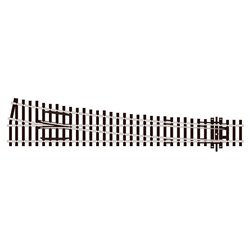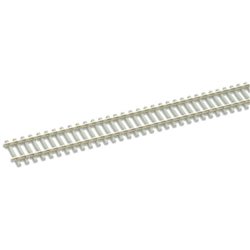Concrete sleepers were introduced to British railways as part of an effort to find more durable and longer-lasting...
No products
Product successfully added to your shopping cart
There are 0 items in your cart. There is 1 item in your cart.
Search Tips
Christmas and New Year
Due to public holidays, orders will be next dispatched on Monday 29th.
If you select next day delivery at checkout, please note deliveries are not made on New Year's Day or Sundays.
The shop in Sandown is closed on Saturday 27th December and will reopen on Tuesday 30th December.
Tuesday 30th: 10am to 4.30pm - Wednesday 31st: 10am to 2.30pm - Thursday 1st: closed - Friday onwards: 10am to 4.30pm.
Which is the best track to use for my model railway layout?
These days, all main manufacturer's model railway track is fit for purpose, so if you were wondering which track to use, it simply comes down to aesthetics and how much work you are prepared to do when laying the track.
When it comes to model railway track, you have a few choices to make, the most important being whether to use a flexible track or set track.
Set track is unquestionably the easier option with sections of track simply slotting together straight from the box. The downside of set track is that you have to accept a track plan that's achievable using the sections and turnouts available, however, this is not as limiting as you might think. There are some very comprehensive guides available featuring a number of credible layouts constructed wholly from set track, so be sure to check them out before dismissing this option.
If you prefer the flexibility and realistic curves that flexible track provides, you then have a choice of finescale or regular track. Finescale track is more prototypical using finer rails more in scale with the locomotives that run on them, but it can create some running issues with older rolling stock, so this should be considered at the planning stage. Regular flexible track gives you an enormous scope for creating bespoke track layouts, and the turnouts, designed specifically for use with flexible track, will facilitate a more realistic distance between two parallel lines, something that's not possible with regular set track turnouts.
Next, you can choose your sleeper type. Flexible track is available with wood effect sleepers, these are pre-coloured black so will require painting but nonetheless feature a very realistic grain. Alternatively, you may wish to use a flexible track with concrete effect sleepers for more modern railways.
In summary, set track is easier to work with, and with the help of a few guides, a fairly convincing railway can be achieved. Flexible track, on the other hand, allows you to model a layout closer to the prototype but involves more work installing it as it will require the trimming and fixing more firmly in place. The choice is yours!
Click here to receive the tips weekly in your mailbox. You can unsubscribe at any time.










